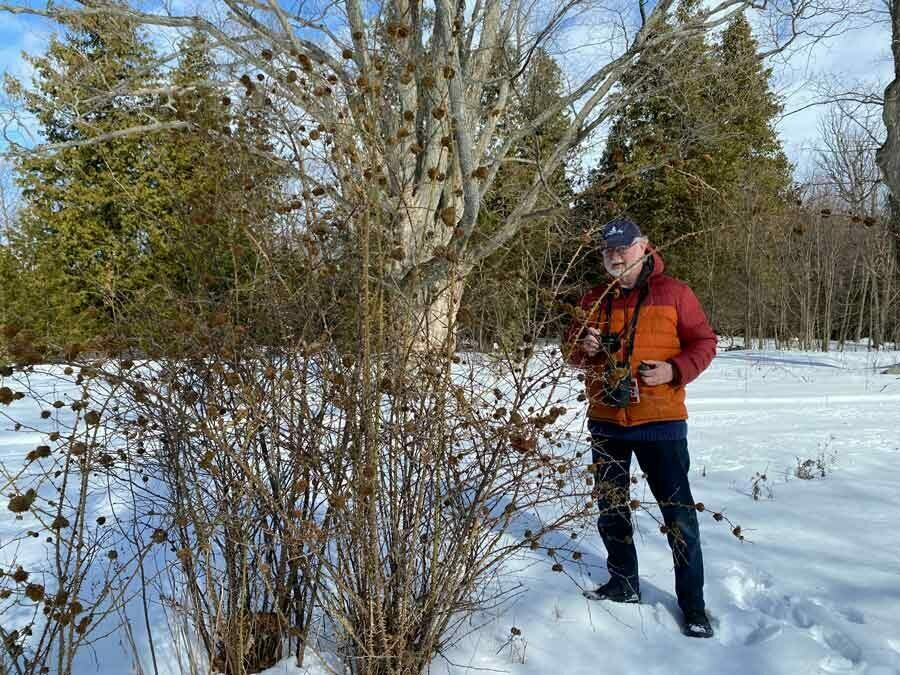MANITOULIN— It was a common practice 150-200 years ago for pioneers from Europe to bring cuttings of rose bushes to Canada for planting in their gardens as a reminder of home. One of these rose shrubs brought to Manitoulin Island was the ‘dog rose,’ valued because it grew fast, needed little care and produced five-petalled, fragrant flowers. Further, its bright red hips (seed producing parts of a rose shrub) were eaten in the fall because their high level of Vitamin C prevented scurvy.
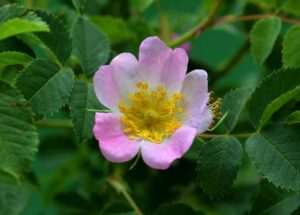
Dog roses are so hardy that some of those brought from Europe are still growing near the original site of the homestead. Others spread from these sites as a result of birds and mammals eating the hips and depositing them in a packet of fertilizer far from the pioneer’s homestead.
To make the story even more intriguing, the pioneers inadvertently introduced bizarre structures called galls which were attached to the leaves and stems of the shrubs. Inside the galls were the larvae of tiny wasps, the adults of which emerge in the spring to lay eggs on young leaves. Of interest, they only live on dog roses; they do not gall other wild or garden roses.
Larvae of rose gall wasps stimulate the leaves into becoming large hairy masses varying in size from olives to oranges. Galls are green to red while growing, but turn brown in the fall. Large galls can contain up to 50 larvae, all of which turn into adults the following spring and chew exit tunnels to the outside.
Adult female wasps are tiny (5-7 mm in length) and harmless as they do not sting, eat or mate (males are rare and play no functional roles). Adults must quickly find new leaf buds and lay eggs as they live for only 3-4 days.
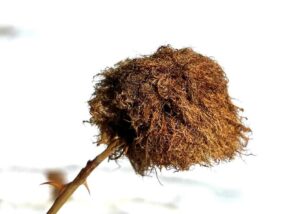
The immature, legless larvae spend the next 51 weeks within individual small chambers near the centre of the gall waiting to detect just the right conditions to turn into adults and search for new plants to lay their eggs.
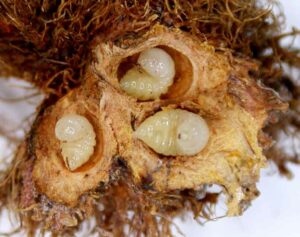
In mid-February, I was told of a large, isolated rose bush covered with strange growths in a pasture near Mindemoya. I was sure it was the European mossy gall as I had found about 30 shrubs on the Island in previous years with the same gall. I have studied dog roses and the mossy gall from Washington State in the US to Newfoundland, and in most cases there were no more than 5-10 galls per shrub.
The Mindemoya shrub, in contrast, had about 400 galls likely breaking a world record for the largest number of galls found per shrub. Surprisingly, nearly all the Mindemoya galls were new ones that had started growing in 2022, meaning that the wasps by chance had found the shrub for the first time last spring.
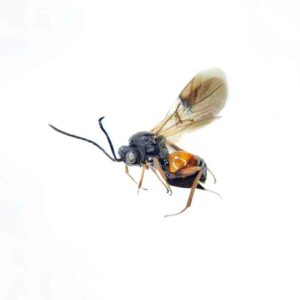
Many hundreds of wasps will be emerging from these galls, but most will perish since they are highly specialized insects that must first locate the right species of host rose with leaf buds at a particular stage of development for egg laying and gall formation. Adults are poor fliers and rely on the wind to carry them to new sites, so nearly all will be unsuccessful. I will return to take samples of the galls in the spring to rear the inhabitants and compare them to those found in European galls.
Dog roses can be purchased at nurseries today for growing in Manitoulin gardens and it is possible that populations of gall wasps that have persisted for decades will find your roses and mossy galls will appear.

Galls rarely cause damage to roses so if you find a few on your shrubs, consider yourself lucky. You can now explain to friends how these tiny hitchhikers made their way from Europe to your garden. And if you tire of them, they can be simply removed with snips and discarded.
Joe Shorthouse is a retired professor of entomology at Laurentian University and a summer resident of Manitoulin Island. He is a frequent contributor to The Manitoulin Expositor.

